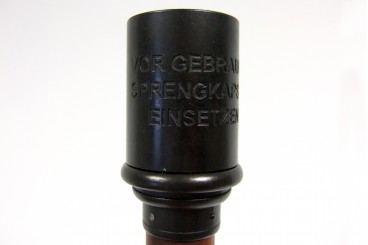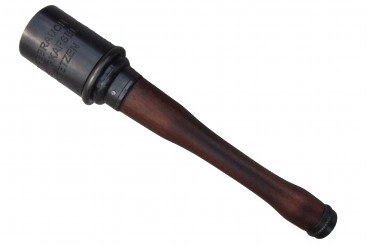Categories
M-24 grenade Stielhandgranate, Germany (used in World War I and II).
The pomegranate handle was introduced in 1915 and the design was developed in the First World War. The detonator was by friction. This method was rare in other countries, but widely used in German grenades.
The shell was composed of a hollow handle with a detonator and an explosive head at one end. Inside the hollow handle, a rope with a porcelain ball was attached to the detonator. The rope is held in place by a removable lid at the base. To use the grenade, the cap from the base is unscrewed, allowing the ball and the rope drop. By pulling the rope, it dragged a steel rod through the fuse, causing it to turn on and begin the pre-detonation of five seconds.
The first handle grenades had uncovered rope, which came out of the handle near the bottom (instead of going into this, covered by removable from the base). This caused the strings had a tendency to tangle and trigger grenades when the German soldiers took them out, causing severe (and usually fatal) injuries.
Handle grenades were disassembled in boxes, wooden (later metal) and the assembly of these was done prior to combat. Inside the lid of the box there was the following reminder: "Vor Gebrauch sprengkapsel einsetzen", (in English: insert the detonator before use).
Mostrar
Reference 737
Dimensions:
35 cm
Weight:
543 g
Country of manufacture:
![]()
Epoch:
World War I & II 1914-1945
Type Collectible:
Hand grenades
Related Products
Comments
-
Posted by decimalegio on 17/11/2010 07:23
4molto ben fatta!!! niente da dire.















